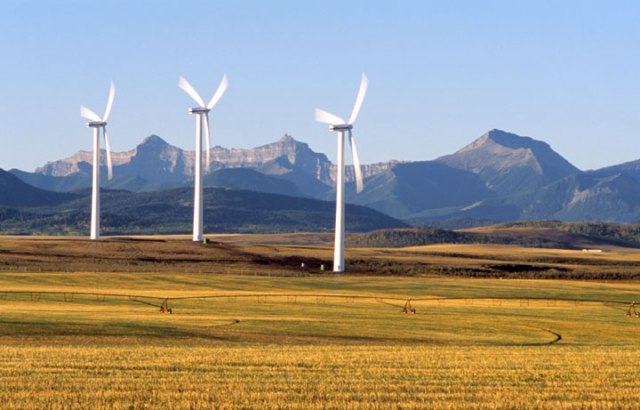
Canada’s non-hydro renewable power share jumps from two to 11 per cent
by Dan Healing, The Canadian Press

Water power remains king of country's electricity grid, but wind and solar have made huge strides over past decade, NEB report says

Wind, solar, biomass and other renewable technologies excluding hydro now account for 11 per cent of Canada’s power. PHOTO: CanWEA
CALGARY—The National Energy Board says a renewable power project building spree between 2005 and 2015 took clean power’s—excluding hydro’s—share of overall generation in Canada from two per cent to 11 per cent.
NEB chief economist Shelley Milutinovic says the buildup means Canada is the fourth-largest generator in the world of environmentally friendly power from sources including wind, solar, biomass and hydroelectric plants.
Renewable generation capacity grew by 26 per cent from about 75,000 megawatts in 2005 to nearly 95,000 megawatts in 2015, according to the federal regulator’s report, Canada’s Renewable Power Landscape.
The report says hydroelectric power capacity grew by about nine per cent to over 79,000 megawatts during the decade.
Non-hydro renewables such as wind, solar and biomass grew more than six-fold, from 2,360 megawatts in 2005 to 15,600 in 2015.
Meanwhile, coal-fired power capacity declined by 6,230 megawatts and natural gas capacity increased by 8,400 megawatts.
“I think that’s one thing people don’t really understand (is) just how significant on a world scale Canada is on the renewable front,” said Milutinovic.
“It is fourth in the world on renewables after China, the U.S. and Brazil and it’s second in the world in terms of hydro production; only China is bigger.”
She says she expects the trend to renewable power to continue thanks to support from governments and consumers.
“Almost every province and territory has some sort of policy to encourage or promote renewables or support them,” she said.
“Things like Alberta moving off coal by 2030, 50 per cent renewables for power generation in Saskatchewan by 2030, all of those things offer strong support for renewables.”
The report notes that 11 per cent of Canada’s greenhouse gas emissions came from the electricity sector in 2014, the latest year for which statistics were available. That’s down from about 16 per cent in 2005.
From 2000 to 2014, emissions from the power sector fell 40 per cent, the report says, due mainly to the phase out of coal in Ontario and initiatives to reduce emissions in Nova Scotia and New Brunswick.
Ontario and Nova Scotia have seen the largest gains in renewable power generation over the decade, with its proportion in Ontario increasing from 23 per cent to 34 per cent and in Nova Scotia from 12 per cent to 24 per cent, the report says.
Hydro is the dominant source of electricity in Canada accounting for 55 per cent of total installed capacity. Four provinces and one territory—British Columbia, Manitoba, Quebec, Newfoundland and Labrador, and Yukon—derive more than 85 per cent of their power from hydro.
Two provinces and a territory relied primarily on coal or natural gas for electricity in 2015: Alberta (90 per cent), Saskatchewan (83 per cent), and Nunavut (100 per cent).